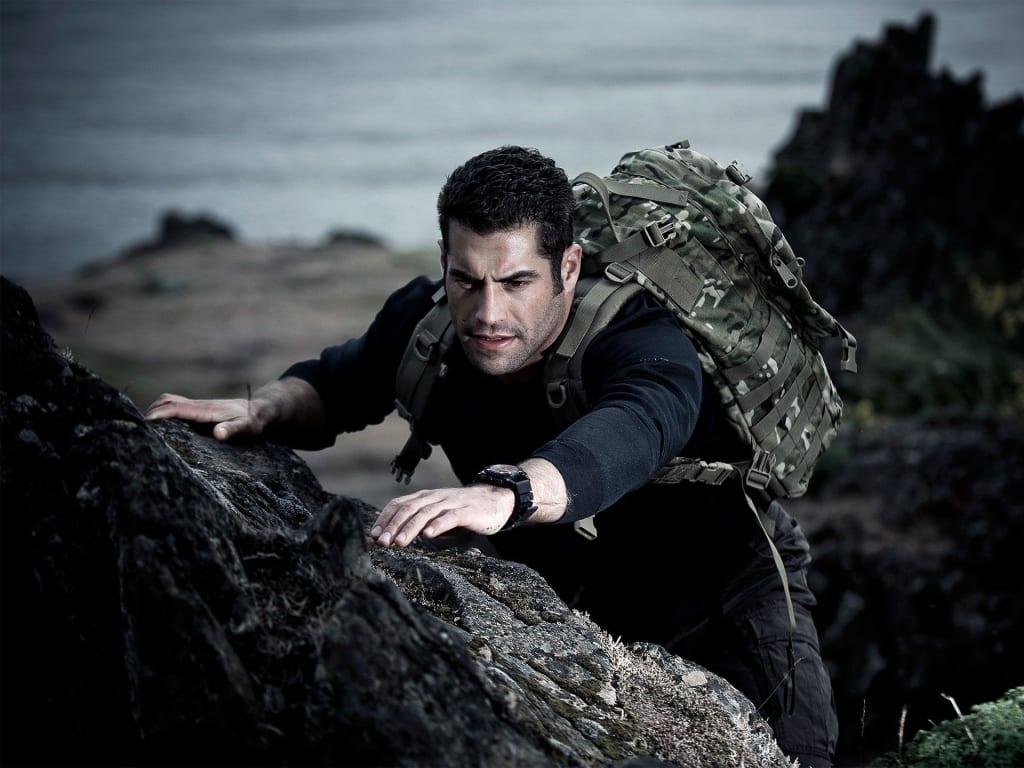Complete Civilians Guide to Military Watches
Military watches are one of the greatest tools for those defending our country, because of how many capabilities they have. Here is the complete civilians guide to military watches, so you can get to know more about them.

How do you think those in the military view navigation, coordinate tactical maneuvers, or even estimate ranges? Built to outlast the toughest events, wether it be dirt, grime, tough climates, and even water submersion, military watches are seriously one of the greatest tools for those in the military to use. Not only are they very helpful in the most difficult of times, but they're also stylish — which is always a plus.
However, their are only a few considered as most collectible in the watch world. People who were actually in the military acquire watches, but there are also individuals who view them as a fashion piece — like those who wear military-inspired clothing or even history buffs bolstering their military regalia collection. Despite how they're used, military watches are an important aspect in the past since they heavy relied on them for navigation, range estimates, and everything else that soldiers need to know on or off the battlefield. But the roots of these watches and their history are broken into two parts: the countries from the West and then from the East. Here's the complete civilians guide to military watches.
When it comes to the complete civilians guide to military watches, the US military has a great history of pocket watches and wrist watches from an extensive past. But, from World War II, specification standards were nearly non-existent, which allowed a wide range of watches to be found on the battlefield. Soon, pocket watches and makeshift wristlets gave way to Mil-Spec wristwatches.
Designations, such as the A-11, led to a myriad of companies, like Bulova, Waltham and Elgin, to create watches that could be water and shock proof, with center sweep hands, plus add hacking seconds capabilities. This really brought on an evolution of American military watches, which led to more useful battle hardware — now they’re considered collectibles that are tough to acquire.
Watches from the 1960s and 70s, such as Rolex, Doxa and Tudor, really brought the big bucks — and they all can be found in the US military units.
Today, military soldiers are wearing watches from Casio, Marathon and Luminox.
Around the 1800s, British watches were going strong everywhere and early examples of battlefield timepieces would likely have been domestically sourced. Yet, in the 1900s, Swiss started replacing the British ones — even foreshadowing of what’s to come for MOD-issued watches.
MOD began issuing watches according to recognized specification during WWII. While Mark VIIB and VIII were two of its variants, followed by the Mark XI after the war, they became among the most sought-after collectables during the era. Produced by IWC and Jaeger LeCoultre, the Mark XI navigator watch was basically ahead of its time by over 30 years. This is a great choice among watch collections. However, the classic W10 Mil-Spec watch was truly reliable during the Cold War — another favorite from the collection in this complete civilians guide to military watches.
The German Imperial Navy’s history isn’t entirely clear, but it had some influence on the evolution of wristwatches for the military around 1880. During this time, only women wore wristwatches as a fashion piece. Then, wristlets proved that utility hands-free time keeping could provide and even push for a new look in mainstream fashion.
However, Germans had a heavy influence in the watch world, which was the pilot watch, or Flieger, first commissioned by the Luftwaffe in 1936. Household names today are Stowa, Laco, A. Lange & Söhne, Wempe, and IWC — Type A and Type B are differentiated through dial designs.
The French military is similar to other European countries — from pocket watches to wristwatches, and then to the simple three-hand watches. Excellent watches for the French include Stowa, Doxa, Hanhart, etc. Yet, the most popular is the Tudor Submariner, which was issued to the French Navy, or Militar Nationale.
The current market for the Tudor is intense, no doubt in part because of Tudor’s recent resurgence. Verifiable issued Tudor Sub prices are more exceptional for the seller, making them instant necessities on this complete civilians guide to military watches.
Even though Alberto Santos-Dumont wasn’t in the military, he influenced both wristwatches and military aviation. He was known as the Father of Aviation in his home country of Brazil. And, during his flying days, Santos-Dumont didn’t like fumbling with his pocket watch, so he asked his friend Louis Cartier for help — resulting in one of the most iconic wristwatches history has ever known: the Cartier Santos.
By Argentina and Peru, military aviators received chronographs powered by the Valjoux 72 calibre. During the early 60s and into the 70s, Rolex was the main provider in timepieces for the Peruvian military — the Daytona. Even though these vintage Daytonas are overall pricy, their added rareness and military prominence doubles the value.
Japan’s military issued watches are actually really hard to come by. Since WWII, Japan’s watches have become a little more recognizable and documented. However, the most liked wristwatch from that era was made by Seikosha — the watchmaking arm of K. Hattori and precursor to Seiko. Specifically, the Seikosha Big Pilot is an oversized flier’s watch that featured a 15-jewel pocket watch movement and an inner rotating bezel.
Only ones that are in good condition can sell for around $10,000.
When it comes to complete civilians guide to military watches, believe it or not, the Chinese military watches were very strong. Between Mao’s revolution, smaller-scale skirmishes, and role in the Korean and Vietnam Wars, the Chinese military were very busy over the last 70 years and in need of watches.
Then came the Tianjin Watch Factory’s pilot chronograph, which saw a fairly short production run, beginning in 1963 — which is seen as an interesting piece, since its movement is a direct successor to the famous Swiss-made Venus 175. Even though the original is super rare, Tianjin — now know as Sea-Gull — recently released a more accurate and desirable homage that utilizes a modified version of the original.
Russian watches have eccentric reasons as to why people truly love them: interesting markings on the dial, the Russian lettering, and their unique design as a whole. Since inception in 1942, Vostok produces very well-known examples, such as the Komandirski, which was the standard issue USSR Ministry of Defense timepiece in 1965. The oddest of all the Russian military watches is the Zlatoust 191-ChS. Since it’s one of the largest (60 milli-meters in diameter) and most bombproof, the 191-ChS is the actual work of the Cold War arms race.
Most originals out there can actually go for around $1,500 — a fair price for most collectors.
When it comes to watches for the Indian military, it’s not as clear as other countries. Yes, they did issue watches in limited capacities, but personnel were often expected to procure their own timepieces. However, the two watchmakers, Hindustan Machine Tools (HMT) and West End Watch Company, were both the main suppliers for the Indian military in the 20th century.
HMT is known for its cost-conscious, durable and reliable watches. Despite a high percentages of fakes, genuine articles used by the Indian military can be found en masse. The 1960s/70s HMT Jawan most likely goes for less than $100. There are even rare HMT watches that were owned by Indian pilots around the same era — but, like I said, it’s rare among the complete civilians guide to military watches.
Watches issued by the Australian military over the years have looked fairly similar to the UK MOD. You’ll even see JLC and IWC Mark XIs from the 50s, Lemania single pusher chronographs from the 60s, and even Hamilton field watches from the 80s. Australians often found themselves wearing the Benrus plastic watch in the jungles of Vietnam — even referring to them as “Mickey Mouse watches” — the Aussies didn’t really like the Benrus’ disposable nature.
Aside from that, one of the more interesting pieces Royal Australian Navy (RAN) clearance divers were issued was the Droz Super Compressor. Super compressors are unique and highly sought after by fans of vintage dive watches that utilized a case with a seal that tightened as water pressure increased.
In the complete civilians guide to military watches, for those with military watch collections or watch collections in general, great pieces like Droz Super Compressors, which were issued in the 60s and 70s, are a great addition.
About the Creator
George Nekilan
Has a vegetable garden in his backyard, 5th son out of 8 and is a sucker for chick flicks.






Comments
There are no comments for this story
Be the first to respond and start the conversation.